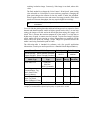
14 I-Class
3.0.1 Communications
Using a data detection process, the interface selection occurs automatically in the
printer. At power-up, the printer begins monitoring the interface ports for
activity. When the host transmits data, the printer port detecting this data is set
‘active’ and remains active as long as data flow continues. Once the incoming
(received) data flow stops and the Host Timeout Value (see Section 4.1.6) is
exceeded, the detection process will be repeated. In addition, should the data
flow stop before a complete label format is received, the format will be ignored
and must be sent to the printer again.
;
Note: To change an active port immediately, cycle the printer power ‘Off’
and ‘On’.
Parallel Port:
The parallel interface has two menu-selectable modes of operation: uni-
directional or bi-directional. Uni-directional mode is forward channel
communication and requires a Centronics
cable with a 36 pin male connector.
Bi-directional mode is IEEE 1284 Compliant, using forward and reverse channel
communications. In this mode, data can be sent to the host provided it is also
IEEE 1284 Compliant and has supporting software. This mode requires an IEEE
1284 cable with a Centronics
36 pin male connector.
Serial Port:
The serial interface supports RS-232C and, if equipped, RS-422
communications. The following list of serial port settings is menu-selectable and
must match the host computer’s serial port settings; see Section 4.1.6.
Baud Rate (serial communication speed)
Word Length
Word Parity
Number of Stop Bits
Handshaking Protocol
In addition to the port settings, the serial interface cable wiring must have
specific connections (pin-outs) for proper data exchange between the host
and printer. The different serial cable pin-outs, suggested applications, and part
numbers are in the following table (contact your reseller for ordering
information).


















